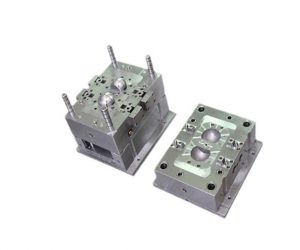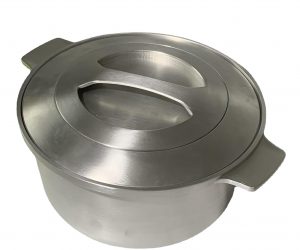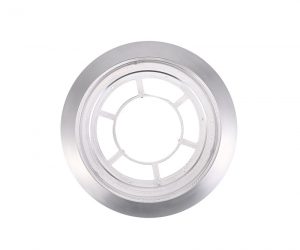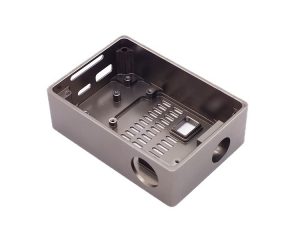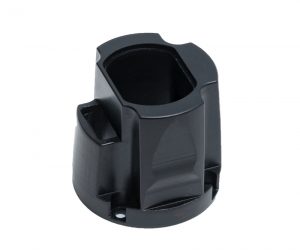The reciprocating screw injection molding machine: a chaotic ballet of heat, pressure, and precision. Far from a simple process, its operation represents a complex interplay of thermodynamic forces, material science, and sophisticated control systems, yielding a seemingly effortless creation of plastic components. This analysis delves beyond the superficial, exploring the inherent unpredictability and nuanced challenges within this ubiquitous manufacturing technology.
The Machine's Entropy: The seemingly straightforward architecture—hopper, screw, barrel, heating elements, nozzle, clamping unit, and mold—belies the chaotic dance of material transformation within. The reciprocating screw, a seemingly simple mechanism, is in reality a finely tuned engine of shear and compression, its action a delicate balance between plasticization and degradation. The heating elements, far from uniform heat sources, create thermal gradients within the barrel, influencing polymer flow and potentially leading to unexpected variations in melt viscosity and degradation profiles.
Injection: A Controlled Explosion: The injection process is not a mere pushing of molten plastic; it’s a carefully orchestrated pressure wave propagating through a non-Newtonian fluid. The screw's reciprocating motion, while seemingly deterministic, is influenced by back pressure from the mold cavity, melt viscosity fluctuations, and even subtle variations in the plastic pellets themselves. This inherent unpredictability necessitates sophisticated control algorithms to maintain consistent injection parameters. The "required amount" of molten plastic is not a static value, but rather a dynamically calculated target, constantly adjusted based on feedback from pressure sensors and temperature profiles.
Clamping: A Struggle Against Yield: The clamping unit's role extends beyond simple mold closure. It's a battleground where the immense pressure of the molten plastic contends with the clamping force, a dynamic equilibrium that must be precisely managed to prevent mold deformation, flash formation, and part defects. The clamping pressure profile, far from being constant, is often carefully tailored to mitigate warpage and sink marks, a testament to the complexities of polymer solidification under pressure.
Cooling: A Race Against Time: Cooling is not a passive process but a race against time and temperature gradients. The cooling rate, determined by the mold design, cooling channels, and ambient temperature, directly influences the final part properties, including crystallinity, mechanical strength, and dimensional accuracy. Minor variations in cooling can lead to significant deviations in the final product, highlighting the inherent sensitivity of the process.
Ejection: The Final Uncertainty: Even the seemingly simple ejection process harbors unpredictability. Ejector pin design, plastic material properties, and even the slightest variations in part geometry can lead to sticking, warping, or damage during ejection. The seemingly straightforward act of removing the part from the mold is, in reality, a critical stage where the accumulated uncertainties of the entire process can manifest.
Beyond the Manual: While advanced control systems offer a degree of precision, they cannot fully eliminate the inherent stochastic nature of the process. Material variations, subtle changes in ambient conditions, and the ever-present threat of equipment wear all contribute to a degree of unpredictability that demands constant monitoring and adjustment. The "consistent and repeatable part quality" is not a guaranteed outcome but rather an aspiration constantly pursued through meticulous process control and rigorous quality assurance.
In conclusion, the reciprocating screw injection molding machine, while seemingly straightforward, is a complex system fraught with subtle uncertainties and nonlinear interactions. Mastering this technology requires not only a deep understanding of its mechanics but also an appreciation for its inherent unpredictability and a commitment to continuous optimization and adaptation.
The pursuit of reliable and efficient plastic part production necessitates a thorough understanding of advanced manufacturing techniques. Among these, the reciprocating screw injection molding machine stands out, yet its operational nuances often remain shrouded in technical jargon. This exposition aims to dissect the intricacies of this technology, revealing both its inherent strengths and its unpredictable vulnerabilities.
Unlike its simpler counterparts, the reciprocating screw injection molding machine operates on a principle of controlled chaos. The seemingly straightforward process—melting plastic, injecting it under pressure, cooling, and ejecting the finished product—masks a complex interplay of thermodynamic forces, material properties, and precise mechanical movements. The reciprocating screw itself, a marvel of engineering, acts as both a mixer and a pump, subjecting the molten polymer to a dynamic regime of shear and compression. This process, while crucial for achieving homogeneous melt flow, introduces a degree of unpredictability; subtle variations in screw geometry, rotational speed, and backpressure can significantly impact the final product's quality and consistency.
The machine's control system, a sophisticated network of sensors and actuators, attempts to tame this inherent chaos. Feedback loops monitor temperature, pressure, and flow rate, constantly adjusting parameters to maintain optimal operating conditions. However, unforeseen events—a sudden surge in power, a minor material flaw, or even the gradual wear of critical components—can disrupt this delicate equilibrium, leading to unexpected outcomes. The resulting defects, ranging from subtle surface imperfections to catastrophic mold failures, underscore the need for meticulous monitoring and preventative maintenance.
The advantages of this technology are undeniable, particularly in high-volume production runs. The reciprocating screw's efficient mixing action ensures consistent material properties, leading to improved part quality and reduced scrap rates. Furthermore, the precise control over injection pressure and velocity allows for the creation of complex, intricately detailed parts that would be impossible to achieve with simpler methods. However, this precision comes at a cost. The high initial investment, coupled with the specialized expertise required for operation and maintenance, presents a significant barrier to entry.
The inherent unpredictability extends to the machine's lifespan. Predicting the onset of component failure remains a challenge, despite sophisticated predictive maintenance algorithms. The cumulative effects of thermal cycling, mechanical stress, and material degradation can lead to unforeseen breakdowns, resulting in costly downtime and potential production delays. Therefore, a robust maintenance program, incorporating both preventative and corrective measures, is paramount.
Choosing the right reciprocating screw injection molding machine requires a nuanced understanding of one's specific production needs, budgetary constraints, and risk tolerance. This decision transcends mere specifications and necessitates a comprehensive evaluation of the machine's operational characteristics, maintenance requirements, and potential for unforeseen complications. Only then can one harness the power of this sophisticated technology while mitigating its inherent unpredictability.
What is a reciprocating screw injection moulding machine?
A reciprocating screw injection moulding machine is a type of machine that uses a rotating screw to melt and inject plastic material into a mould cavity. The screw acts as both a plunger and a mixer, ensuring a uniform melt and a consistent injection pressure. The screw also has a back-and-forth motion, hence the name "reciprocating", which allows it to retract and accumulate more material for the next shot.
How does a reciprocating screw injection moulding machine work?
A reciprocating screw injection moulding machine consists of three main components: the hopper, the barrel, and the clamping unit. The hopper is where the plastic granules or pellets are fed into the machine. The barrel is where the screw rotates and melts the plastic material. The clamping unit is where the mould is mounted and closed to form the cavity.
The process of injection moulding using a reciprocating screw injection moulding machine can be divided into four stages: plasticizing, injecting, cooling, and ejecting.
- Plasticizing: In this stage, the screw rotates and pushes the plastic material forward along the barrel. The friction and heat from the screw and the barrel melt the plastic material into a viscous fluid. The screw also mixes the material to ensure a homogeneous melt. As the screw reaches the end of the barrel, it stops rotating and starts moving backward. This creates a space behind the screw where more material accumulates for the next shot. This space is called the shot volume or shot size.
- Injecting: In this stage, the clamping unit closes the mould and applies a force to keep it shut. The screw then moves forward again and injects the molten material into the mould cavity with high pressure and speed. The pressure and speed are controlled by a hydraulic system or an electric motor. The amount of material injected into the mould is equal to the shot volume or shot size.
- Cooling: In this stage, the molten material inside the mould cavity cools down and solidifies into the desired shape. The cooling time depends on several factors, such as the material properties, the mould design, and the cooling system. The cooling system usually consists of water or oil channels that circulate around or inside the mould to remove heat from the material.
- Ejecting: In this stage, the clamping unit opens the mould and ejects the finished part from the cavity. The ejection system usually consists of pins or plates that push or pull the part out of the mould. The part then falls onto a conveyor belt or a bin for collection or further processing.
What are the benefits of using a reciprocating screw injection moulding machine?
Using a reciprocating screw injection moulding machine has several benefits over other methods of injection moulding, such as:
- Higher quality: The reciprocating screw ensures a uniform melt and a consistent injection pressure, which results in better dimensional accuracy, surface finish, and mechanical properties of the parts.
- Higher efficiency: The reciprocating screw allows for faster cycle times and lower energy consumption, as it reduces the amount of material wasted and minimizes temperature fluctuations in the barrel.
- Higher versatility: The reciprocating screw can handle a wide range of plastic materials with different viscosities, melting points, and additives. It can also accommodate different shot sizes and injection pressures by adjusting the screw speed and stroke.
- Higher automation: The reciprocating screw injection moulding machine can be easily integrated with other devices and systems, such as robots, sensors, controllers, and software, to automate and optimize various aspects of production.
What are the drawbacks of using a reciprocating screw injection moulding machine?
Using a reciprocating screw injection moulding machine also has some drawbacks that need to be considered, such as:
- Higher cost: The reciprocating screw injection moulding machine is more expensive than other types of injection moulding machines, as it requires more complex and precise components and maintenance.
- Higher wear and tear: The reciprocating screw is subject to high friction and heat, which can cause wear and tear over time. This can affect the performance and quality of the machine and the parts. The screw also needs to be cleaned regularly to prevent contamination and degradation of the material.
- Higher risk of defects: The reciprocating screw injection moulding machine can produce some defects in the parts, such as flash, short shots, sink marks, jetting, burn marks, and weld lines. These defects are caused by factors such as improper material selection, mould design, process parameters, and machine settings.
How to choose the best reciprocating screw injection moulding machine for your needs?
Choosing the best reciprocating screw injection moulding machine for your needs depends on several factors, such as:
- The type and quantity of plastic material you want to use
- The size and shape of the parts you want to produce
- The quality and performance requirements of the parts
- The production capacity and efficiency you want to achieve
- The budget and space you have available
Some of the main specifications you need to look for when choosing a reciprocating screw injection moulding machine are:
- The shot volume or shot size: This is the amount of material that can be injected into the mould in one shot. It determines the maximum size and weight of the parts that can be produced by the machine. It is usually measured in cubic centimeters (cc) or grams (g).
- The clamping force: This is the force that the clamping unit applies to keep the mould closed during injection. It determines the maximum pressure that can be applied to the material in the mould cavity. It is usually measured in kilonewtons (kN) or tons (t).
- The screw diameter: This is the diameter of the screw that rotates and melts the material in the barrel. It determines the flow rate and shear rate of the material in the barrel. It is usually measured in millimeters (mm).
- The screw length-to-diameter ratio (L/D): This is the ratio between the length and the diameter of the screw. It determines the residence time and mixing efficiency of the material in the barrel. It is usually expressed as a number without units, such as 20:1 or 25:1.
- The injection speed: This is the speed at which the screw moves forward and injects the material into the mould cavity. It determines the filling time and injection pressure of the material in the mould cavity. It is usually measured in centimeters per second (cm/s) or inches per second (in/s).
- The injection pressure: This is the pressure that the screw applies to inject the material into the mould cavity. It determines the packing density and shrinkage of the material in the mould cavity. It is usually measured in megapascals (MPa) or pounds per square inch (psi).
These specifications vary depending on the type and properties of the plastic material, as well as the design and complexity of the mould and parts. Therefore, it is important to consult with experts or manufacturers before choosing a reciprocating screw injection moulding machine for your needs.
